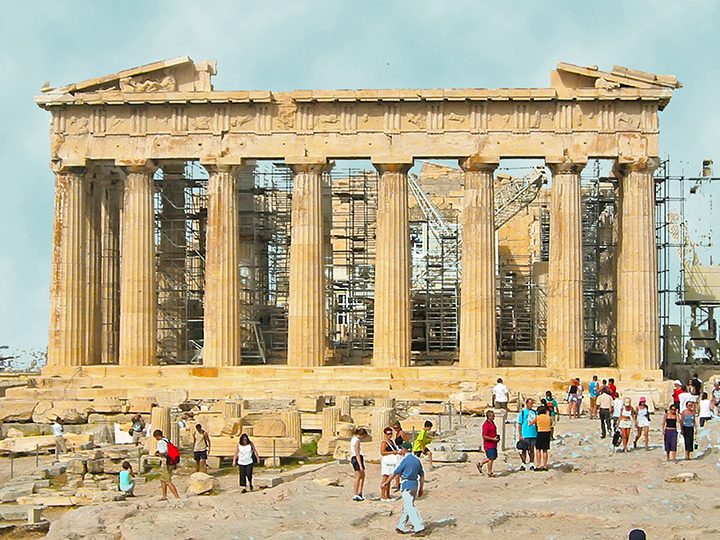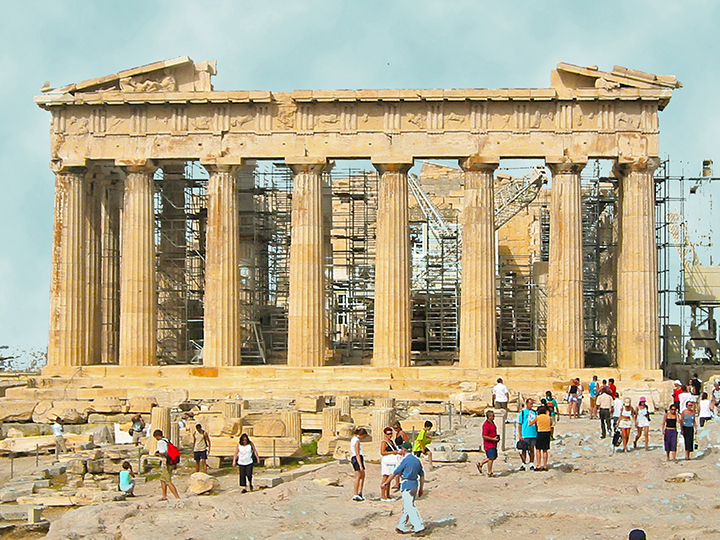
The Parthenon, atop the Athens Acropolis, represents the epitome of classical architecture and the inspiration for buildings around the world, including the United States Supreme Court Building. Its timeless appearance results from a number of clever optical refinements reflecting the perceptiveness of ancient Greek architects.
Pericles, the great Athenian leader, erected the Parthenon from 447 to 432 B.C. to celebrate the accomplishments of the citizens of Athens, then at the peak of its power. The 228-foot-long by 101-foot-wide building sheltered a colossal gold and ivory statue of Athena, the patron goddess of Athens. Because Athenians did not enter the Parthenon, but observed it from outside, architects designed the exterior to communicate visual perfection by taking into account the limitations of human perception. As a result, the Parthenon includes no straight lines and few right angles.
To counter the perception that vertical parallel lines bow inwardly, the middles of the Parthenon’s marble columns are slightly wider than their ends. Because columns set against the bright sky appear smaller than those against a darker background, the diameters of the corner columns are about six centimeters larger than those of other columns. To overcome the perception that horizontal lines sag, the Parthenon’s lintels curve slightly upwardly. Because a triangular pediment makes columns below it appear to bend outwardly, the Parthenon’s columns are closer to each other at their tops than at their bases.
The Parthenon was severely damaged in 1687, when gunpowder stored in it by the Ottomans exploded during a battle with the Venetians. In 1931, a full-scale replica of the Parthenon, based on ancient descriptions and including a magnificent statue of Athena, was completed in Centennial Park in Nashville, Tenn. Today, even those who can’t make it to Greece can determine for themselves if the visual tricks of the Parthenon’s architects really work.




